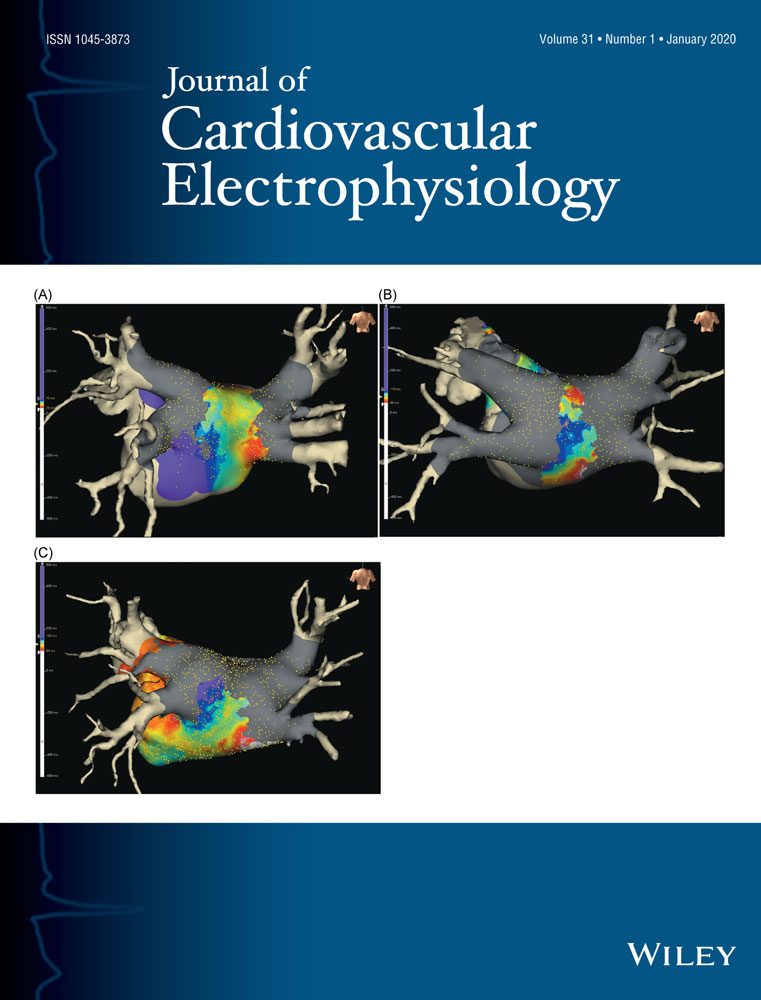RESPONSE TO LETTER TO EDITOR
Long-term risk of cardiovascular implantable electronic device-related infection after catheter ablation of atrial fibrillation
Leon Dinshaw MD,
Corresponding Author
Leon Dinshaw MD
Department of Cardiology, University Heart Center, University Hospital Hamburg, Hamburg, Germany
Correspondence Leon Dinshaw, MD, Department of Cardiology, University Heart Center, University Hospital Hamburg, Martinistr. 52, 20246 Hamburg, Germany.
Email: [email protected]
Search for more papers by this author Christian Meyer MD,
Christian Meyer MD
Department of Cardiology, University Heart Center, University Hospital Hamburg, Hamburg, Germany
DZHK (German Center for Cardiovascular Research) Partner Site Hamburg/Kiel/Lübeck, Berlin, Germany
Search for more papers by this author
Leon Dinshaw MD,
Corresponding Author
Leon Dinshaw MD
Department of Cardiology, University Heart Center, University Hospital Hamburg, Hamburg, Germany
Correspondence Leon Dinshaw, MD, Department of Cardiology, University Heart Center, University Hospital Hamburg, Martinistr. 52, 20246 Hamburg, Germany.
Email: [email protected]
Search for more papers by this author Christian Meyer MD,
Christian Meyer MD
Department of Cardiology, University Heart Center, University Hospital Hamburg, Hamburg, Germany
DZHK (German Center for Cardiovascular Research) Partner Site Hamburg/Kiel/Lübeck, Berlin, Germany
Search for more papers by this author
First published: 21 November 2019
No abstract is available for this article.
REFERENCES
- 1Dinshaw L, Schäffer B, Akbulak Ö, et al. Long-term efficacy and safety of radiofrequency catheter ablation of atrial fibrillation in patients with cardiac implantable electronic devices and transvenous leads. J Cardiovasc Electrophysiol. 2019; 30(5): 679-687.
- 2Crossley GH, Poole JE, Rozner MA, et al. The Heart Rhythm Society (HRS)/American Society of Anesthesiologists (ASA) expert consensus statement on the perioperative management of patients with implantable defibrillators, pacemakers and arrhythmia monitors: facilities and patient management. Heart Rhythm. 2011; 8(7): 1114-1154.
- 3Habib G, Lancellotti P, Antunes MJ, et al. 2015 ESC guidelines for the management of infective endocarditis: the task force for the management of infective endocarditis of the European Society of Cardiology (ESC). Endorsed by: European Association for Cardio-Thoracic Surgery (EACTS), the European Association of Nuclear Medicine (EANM). Eur Heart J. 2015; 36: 3075-3128.
- 4Sandoe JAT, Barlow G, Chambers JB, et al. Guidelines for the diagnosis, prevention and management of implantable cardiac electronic device infection. Report of a joint working party project on behalf of the British Society for Antimicrobial Chemotherapy (BSAC, host organization), British Heart Rhythm Society (BHRS), British Cardiovascular Society (BCS), British Heart Valve Society (BHVS) and British Society for Echocardiography (BSE). J Antimicrob Chemother. 2015; 70(2): 325-359.
- 5Olsen T, Jørgensen OD, Nielsen JC, Thøgersen AM, Philbert BT, Johansen JB. Incidence of device-related infection in 97 750 patients: clinical data from the complete Danish device-cohort (1982–2018). Eur Heart J. 2019; 40(23): 1862-1869.
- 6Pecha S, Linder M, Gosau N, et al. Lead extraction with high frequency laser sheaths: a single-centre experience. Eur J Cardiothorac Surg. 2017; 51(5):ezw425.
- 7Farkowski MM, Maciag A, Ciszewski J, et al. The long term risk of lead failure in patients with cardiovascular implantable electronic devices undergoing catheter ablation. Scand Cardiovasc J. 2019; 53(6): 323-328.




